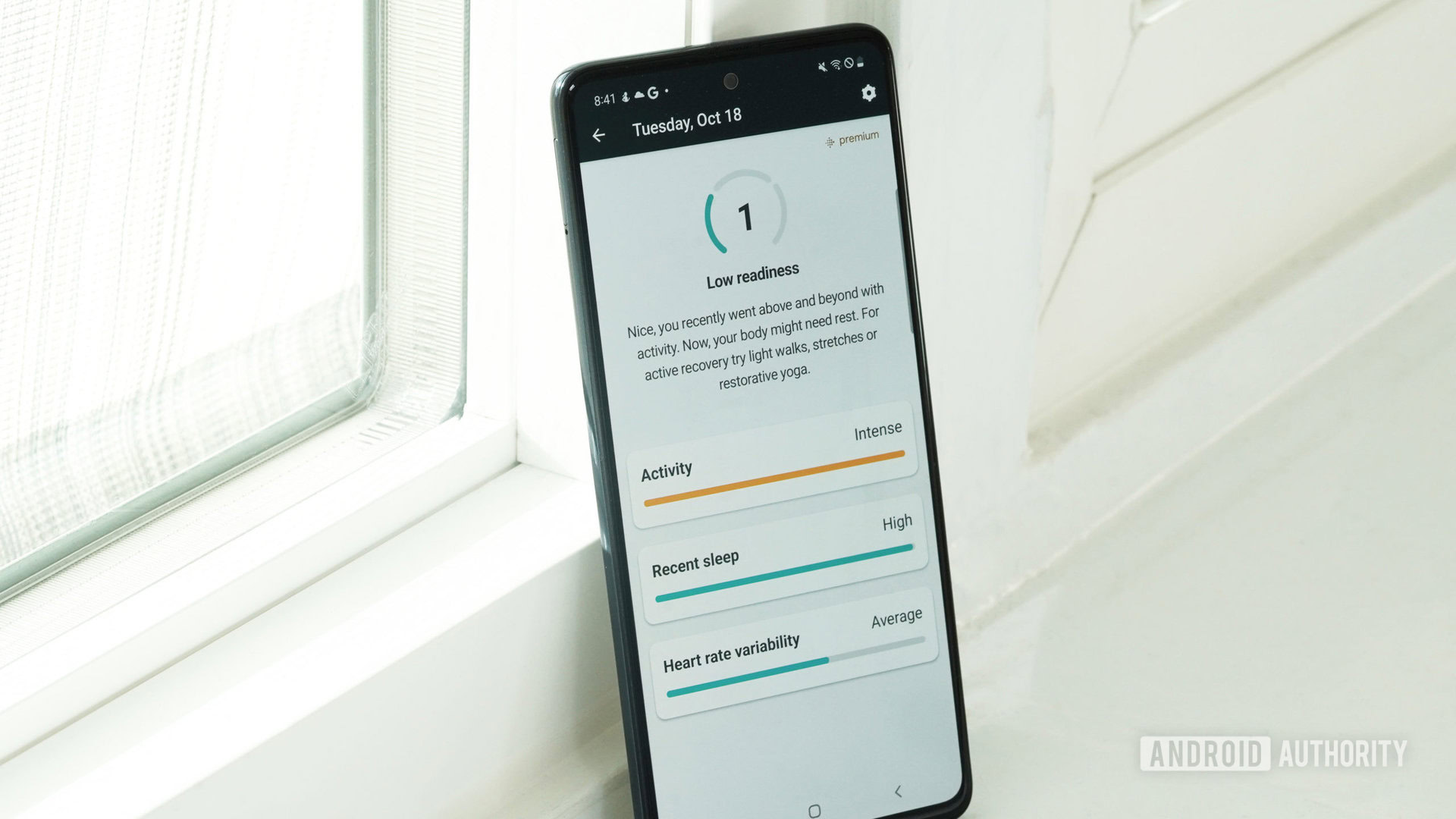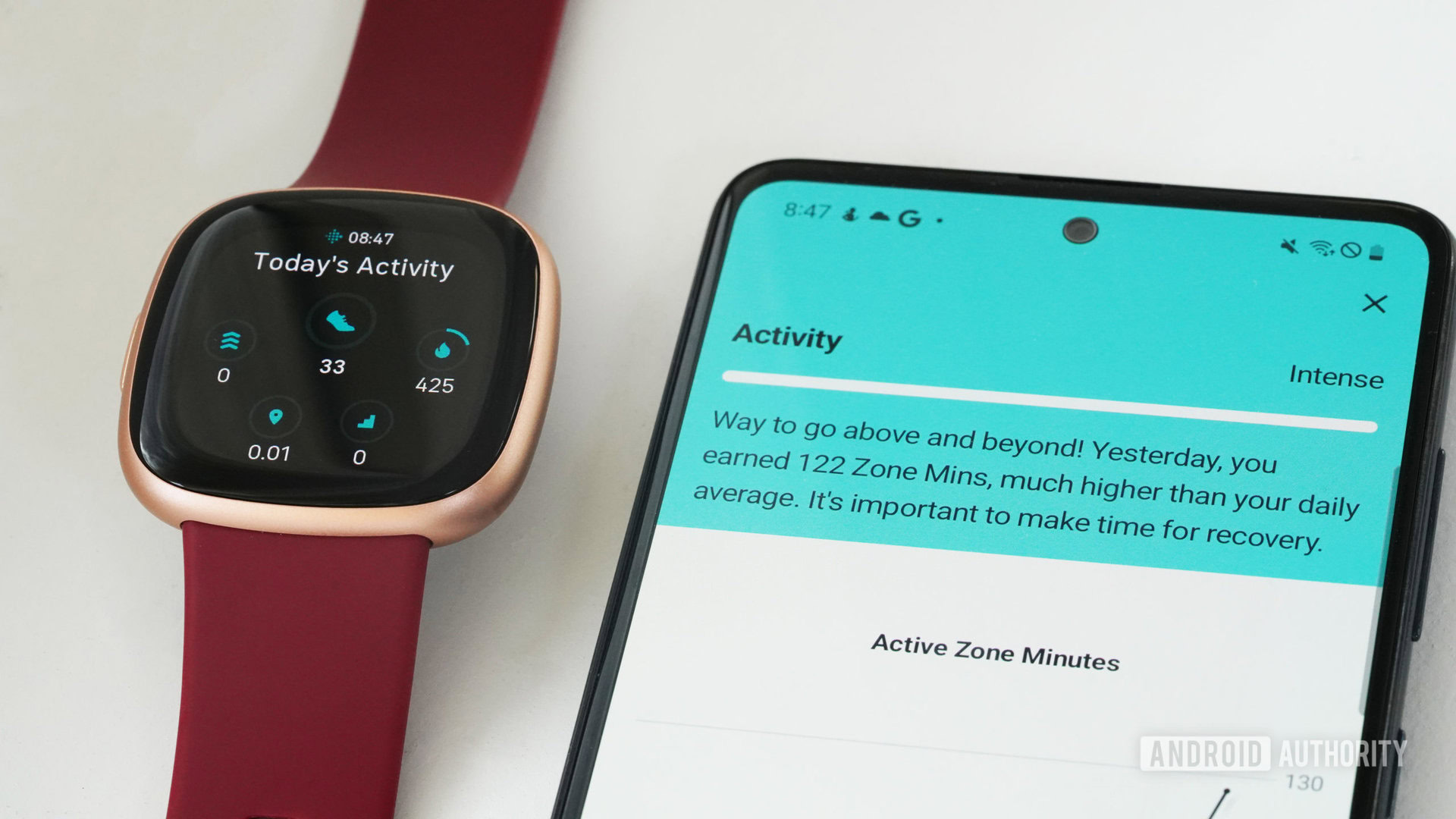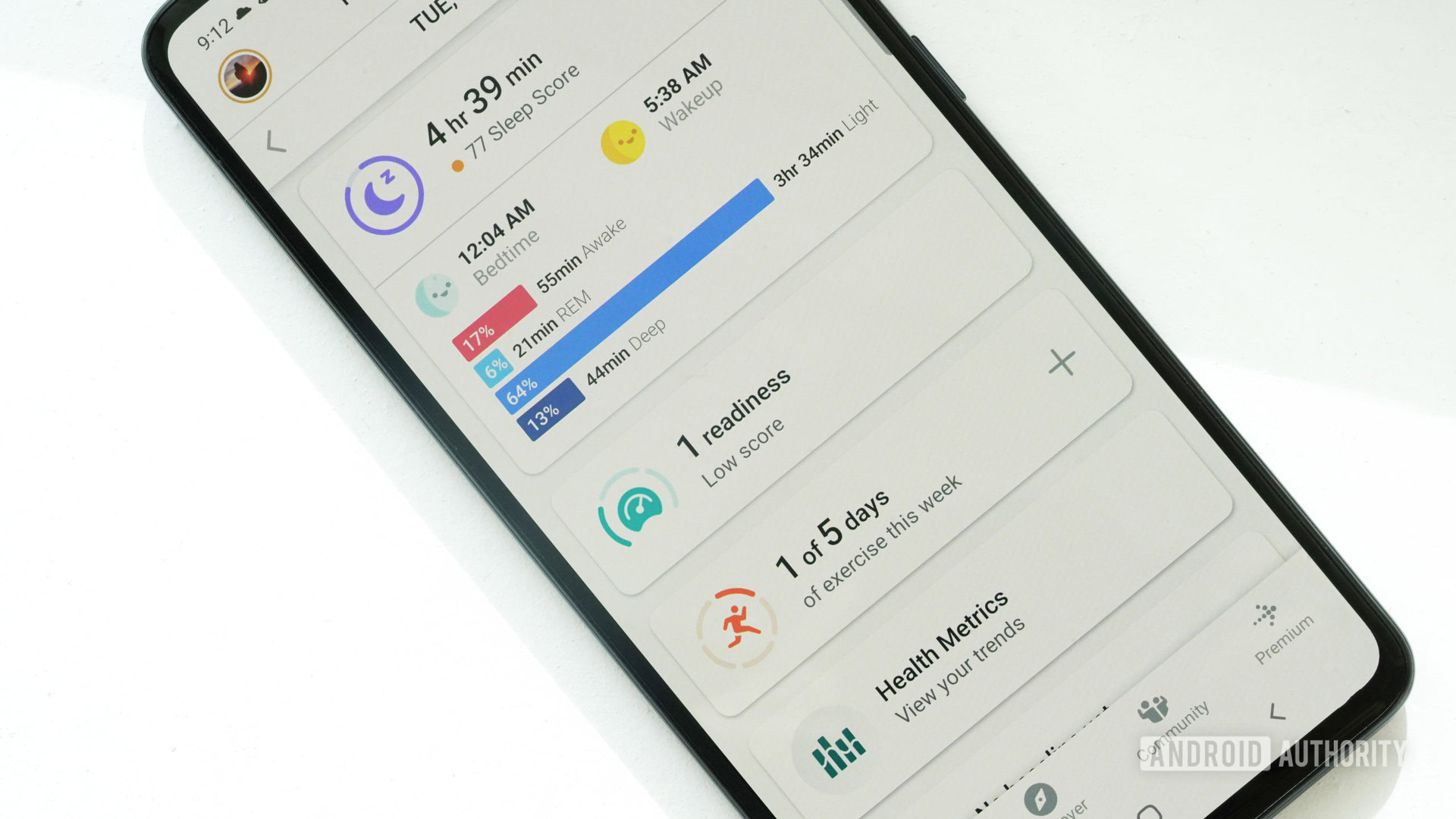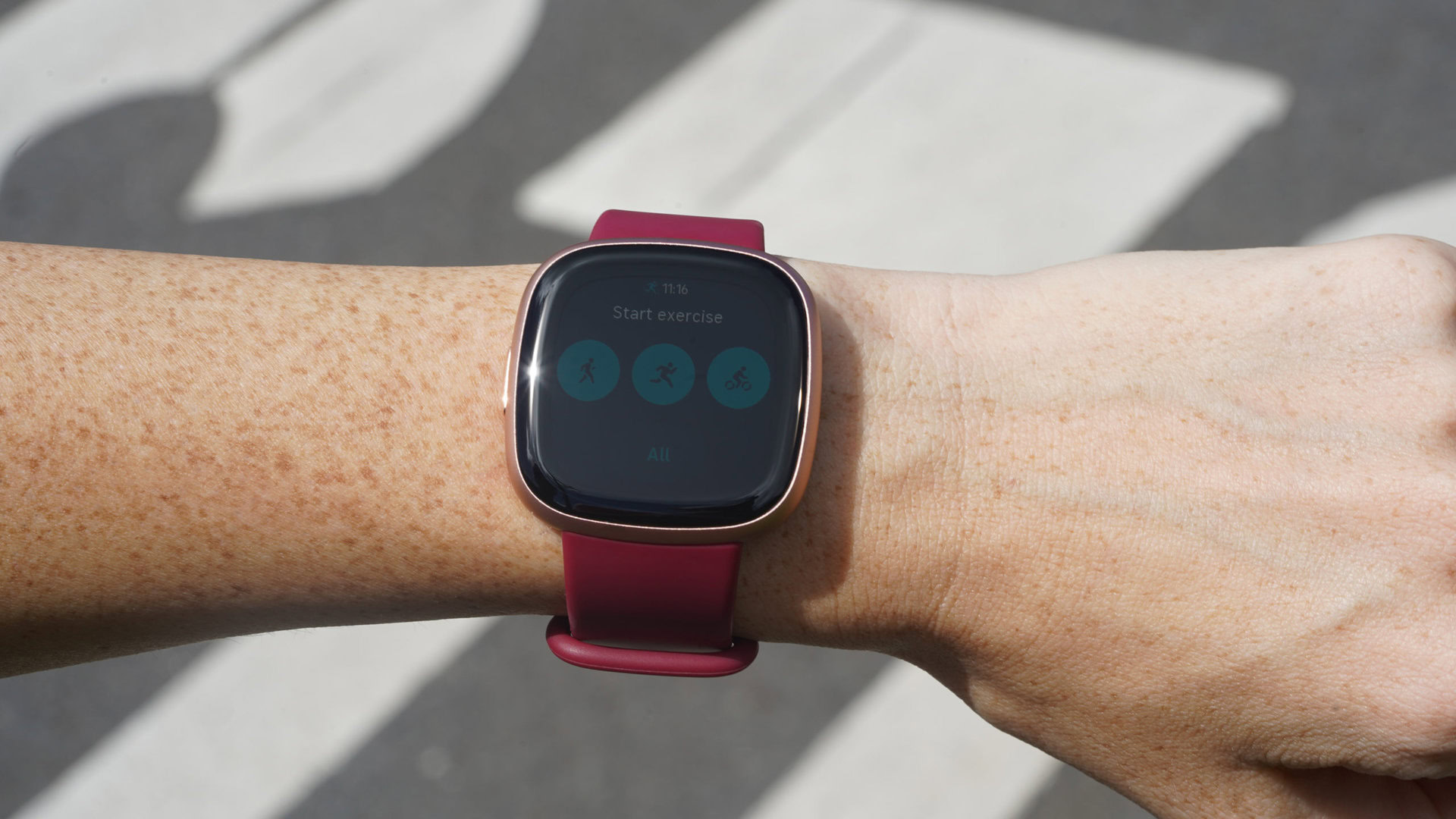Affiliate links on Android Authority may earn us a commission. Learn more.
Fitbit Daily Readiness Score: What is it and why should you use it?

Smartwatch ecosystems are packed with tracking tools and data points. Fitbit aims to leverage your data into actionable insight with Daily Readiness Score. Find out how this feature works and how to tap into its benefits.
See also: Everything you need to know about Fitbit wearables
What is the Fitbit Daily Readiness Score and how does it work
Fitbit’s Daily Readiness Score assesses users’ activity, sleep, and heart rate variability (HRV) to determine what activity they are fit to take on each day. In general, the score helps individuals determine whether they should schedule a workout or prioritize recovery. The feature is similar to Garmin’s Body Battery in that it presents cumulative data as a single, digestible number from 0-100.
The higher your Fitbit Daily Readiness Score, the higher-intensity workout your body is prepared to handle. Meanwhile, a low score means you should rest and recover. Low Daily Readiness scores imply that your energy is depleted from the previous day’s workout, insufficient sleep, stress, or a combination of factors. Each morning, users receive a score labeled either Low, Good, or Excellent. On some compatible devices, these scores can be seen on the wrist, while others require users to visit the Fitbit app on their paired phone.
How is Daily Readiness Score calculated?

To earn a Daily Readiness Score, you must wear your Fitbit device for at least 14 hours daily, including while sleeping. During this time, your Fitbit collects data relevant to energy levels and activity and compares these stats against your personal baselines. The data is then combined to calculate a single overall score indicative of your readiness. The following factors are taken into account when determining each score:
- Activity: By evaluating your heart rate over the course of the day, including during workouts and at rest, Fitbit evaluates how much physical exertion you did and estimates your fitness fatigue.
- Recent sleep: Fitbit combines data from your previous three nights of sleep, including total sleep time and sleep quality, to rate your level of rest.
- Heart rate variability (HRV): Fitbit also measures your HRV, or the amount of variance between your heartbeats. Low HRV typically indicates stress or strain implying a you may be in need of rest or recovery.
Who is Daily Readiness Score for and why use it

Daily Readiness score is available to all Fitbit Premium users with a compatible device. The feature is useful for anyone who wants to keep tabs on their energy levels as well as their personal balance of rest and activity.
By regularly considering their score, users can base their training and exercise on what their body actually needs, rather than on whims or a predetermined schedule. Fitbit also provides suggestions for appropriate workouts based on your Daily Readiness Score to eliminate any guesswork.
Fitbit's Daily Readiness score offers Premium members insight into their energy levels to help users determine how much rest or activity their bodies need.
Daily Readiness Scores also help users identify long-term trends. Over time, users learn how activity levels, sleep patterns, and heart rate variability impact their next day. The feature can also help users improve their overall energy by highlighting problem areas and offering deeper insight.
That said, Daily Readiness Score isn’t without its limitations. For one, it doesn’t necessarily take into account injury or targeted soreness. For example, someone may not have completed a hard workout, but has very sore legs from doing lunges for the first time in a while. It is important to take your literal experience into account in addition to your Daily Readiness Score when planning your rest vs activity.
How to use the Daily Readiness Score

Use your Daily Readiness score to evaluate your body’s needs and plan your day accordingly.
- Open the Fitbit app and tap the Today tab.
- Scroll down and tap your score.
- Tap each category, Activity, Recent sleep, and Heart rate variability, for more detail.
- Activity: A long, yellow bar indicates recent intense activity and suggests a rest day may be necessary. A short, blue bar implies your body is ready to take on more activity. Tapping into Activity data also accesses information about your Active Zone Minutes.
- Recent Sleep: A short yellow bar denotes sleep debt based on your past few nights. A long, blue bar suggests solid sleep and restoration as of late. From this screen, you can also review recent Sleep Scores.
- Heart rate variability: A short, yellow bar signifies low HRV which typically indicates physical or mental stress and an individual in need of rest. A long, blue bar indicates high HRV which, Fitbit explains, suggests better fitness.
Keep an eye on behavior patterns that lead to lower scores and make adjustments as needed. Then, dig deeper into the measurables contributing to your Daily Readiness Score. If a particular category shows concerning levels, review Fitbit’s tips for improving your wellness in that area.
In the Fitbit app, users can tap into further details about their Daily Readiness and the factors that contribute to each score.
For example, higher HRV levels suggest a well-rested nervous system that can quickly manage shifts from rest to intense activity. If you consistently record low HRV, your body is likely experiencing stress. You can improve your HRV by prioritizing sleep, low-intensity exercise, and stress management practices. Likewise, a focus on carving out time for restful sleep can also help improve your Daily Readiness Score. Fitbit has tons of resources for managing your sleep hygiene including the Fitbit Sleep Profile program.
Fitbit devices with Daily Readiness Score

Not all Fitbit devices provide a Daily Readiness Score. As mentioned, you will also need a Fitbit Premium membership to utilize the feature. The Fitbit smartwatches and fitness trackers below provide Daily Readiness Scores.
FAQs
Body Battery is a tool within the Garmin ecosystem. Fitbit offers a similar tool called Daily Readiness Score.
Yes! Fitbit’s Daily Readiness score can be very effective in helping you identify patterns and the relationship between your training and rest.
A Fitbit Premium membership costs $9.99 per month.
You need both a compatible Fitbit device and a Fitbit Premium membership to receive a Daily Readiness Score. If you fail to wear your watch for four or more nights per week, you will not receive a Fitbit Readiness Score.